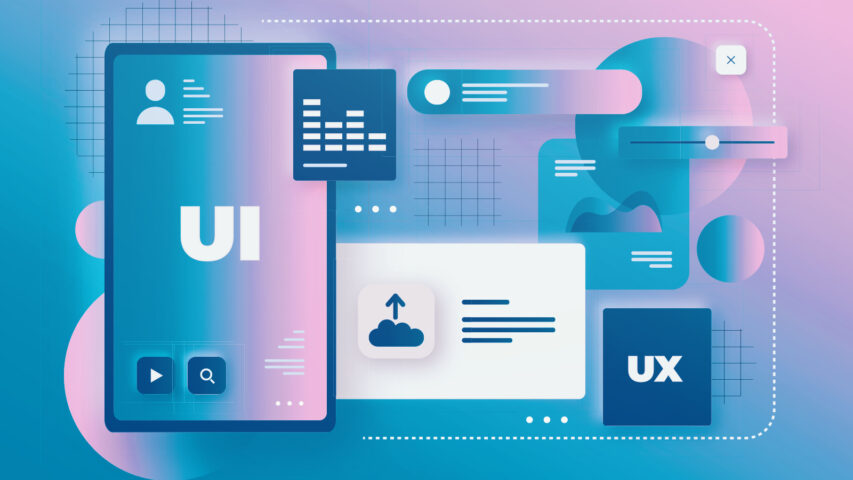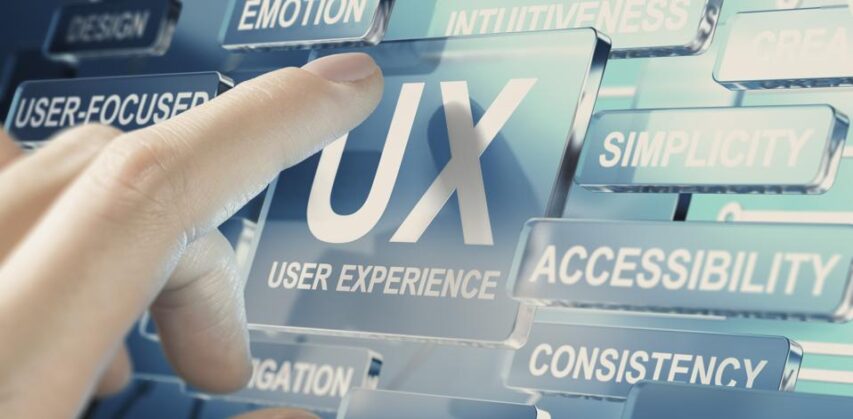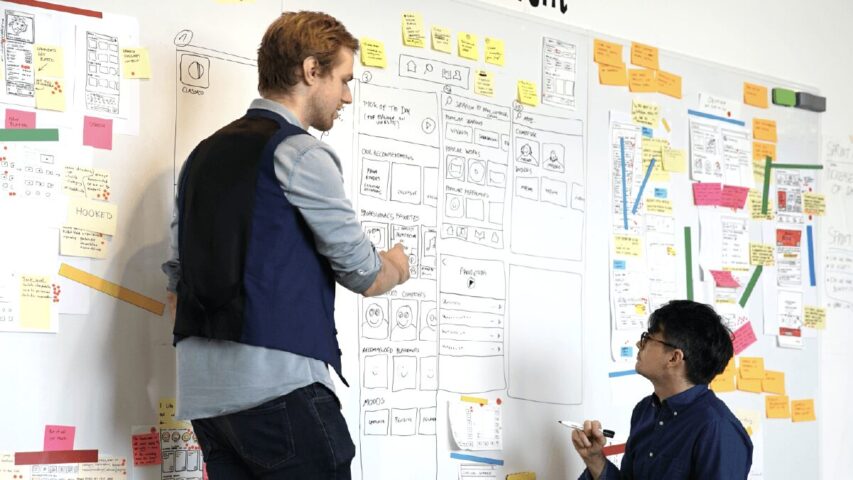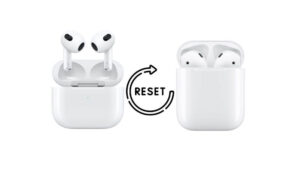The terms UI (User Interface) and UX (User Experience) often intertwine, painting the canvas of user interaction and satisfaction. UI focuses on the visual and interactive elements of a product, such as buttons, icons, and layout, which guide users through their digital journey. Meanwhile, UX is about the overall feel of that experience, from the ease of navigation to the emotional responses elicited by the product.
Understanding the difference between UI and UX is central to creating digital products that catch the eye, fulfill user needs, and solve real-world problems. This foundational knowledge is vital for anyone involved in website design services & product development, from designers to developers to strategists, as it shapes the path toward satisfaction and business success. As we explore these concepts, we’ll discover the differences between UI and UX and shed light on how each contributes to the lifecycle of a successful digital product.
What is UI?

Think of UI as the bridge between the user and the digital product, a blend of aesthetics and practicality designed to navigate the user through the digital space. It’s the layout of a website, the buttons on an app, the typography, and the color schemes that catch your eye and guide your actions.
The essence of UI lies in its components – from the micro-interactions, like the feedback from a button click, to the overall visual layout that frames your digital experience. The primary goal here? To build an interface that is intuitive and pleasing. This blend aims to reduce friction and make digital interactions second nature.
A well-designed UI acts as a silent guide, leading users effortlessly through their online journey making their experience satisfactory and delightful. As we peel back the layers of User Interface design, we uncover its true purpose: to create a silent dialogue between the user and the technology, a dialogue that feels as natural as conversation.
What is UX?

When we shift focus from UI to UX, or User Experience, we can say that it encompasses every aspect of the user’s interaction with a product. Its aim is to make this experience as fulfilling as possible. It’s not just about how the product looks, but how it feels, responds, and meets the user’s needs at every step.
UX design interweaves various components, such as usability, where ease and efficiency of use take center stage; accessibility, ensuring that everyone, regardless of ability, can navigate and benefit from the product; and efficiency, which facilitates the journey from point A to B and reduces hassle and frustration. What is the goal? To sculpt an experience that feels less like using a tool and more like a series of interactions so smooth and intuitive that the user accomplishes their goals without any obstacles.
The essence of UX is understanding the user’s world – their needs, their pains, and their moments of joy. UX seeks to build a bridge between desire and reality, crafting experiences that solve problems and bring delight and satisfaction. We can say that UX is the silent hero that turns everyday interactions into a journey worth taking.
Key Differences Between UI and UX

While intertwined, they serve unique roles in the product development process. Here’s a breakdown to clarify the distinctions:
- Surface vs. Depth: UI focuses on the product’s surface — the look, the feel, and the interactivity. This includes everything from typography and colors to button styles and graphics. In contrast, UX delves deeper, encompassing the overall feel, usability, and functionality of the product.
- Aesthetics vs. Experience: While UI is concerned with the aesthetic aspects of a design, making sure the visual language aligns with the brand’s identity, UX prioritizes the experience, aiming to optimize their interaction with the product in a meaningful way.
- Immediate Impact vs. Long-term Relationship: UI can make an immediate impact on users with its visual appeal, influencing their first impression. However, UX holds the key to a longer-term relationship with the user, building continued satisfaction through navigation and intuitive design.
- Details vs. Big Picture: UI designers focus on the details — the buttons users click on, the text they read, the images, the sliders, and the entry fields. On the other hand, UX designers concentrate on the big picture, and how all these elements come together to create a complete, efficient, and satisfying journey.
- Complementary Roles: While distinct, UI and UX should not be viewed in isolation. A visually stunning interface (UI) lacking in ease of use (UX) can frustrate users, just as a well-thought-out journey (UX) can be undermined by poor visual execution (UI). The best digital products combine excellent UI with UX, making sure not only that the user is drawn in but that they remain engaged.
The Interdependence of UI and UX

UI and UX are distinct yet deeply interconnected. Their collaboration is beneficial and essential for cultivating a product that resonates with users. This interdependence between UI and UX forms the backbone of satisfaction, ensuring that every touchpoint aligns with the needs, preferences, and expectations.
UI, with its focus on visual elements, sets the stage for a user’s initial interaction with a product. It’s the first impression, the book cover, that invites you to take a closer look. But a beautiful cover alone doesn’t make a bestseller. Here, UX steps in — the story within, crafted carefully to keep the reader engaged. UX ensures that once the UI draws users in, they find a coherent, logical, and enjoyable journey awaiting them.
Improvements in UI, such as a more intuitive layout or a more appealing color scheme, can influence the user’s perception and make the product more inviting and accessible. Similarly, enhancements in UX, like faster loading times or more logical navigation, can alleviate frustrations and make the overall experience smoother and more enjoyable. When UI and UX evolve together, they create an interface that looks good and feels right.
Real-world Examples of UI and UX in Action
Let’s explore tangible examples from well-known products to understand the practical application and impact of UI and UX:
-
- Instagram vs. Vero: Instagram has continually evolved its UI to remain fresh and engaging while maintaining an intuitive UX that users find easy to navigate. This has contributed significantly to its massive user base and high engagement levels. On the other hand, Vero, despite its promise of a no-ad platform, struggled with a complex, non-intuitive UI and UX, which led to frustration and decreased adoption despite initial interest.
- Apple Maps vs. Google Maps: Initially, Apple Maps was released with significant UI and UX issues, including inaccurate mapping and poor route directions. This led to public outcry and a rare apology from Apple. In contrast, Google Maps has consistently emphasized a user-friendly interface (UI) and reliable, user-friendly navigation experiences (UX), maintaining its status as the preferred mapping service for millions.
- Amazon vs. eBay: Amazon’s clean UI and coherent UX design, with features like 1-Click ordering and personalized recommendations, make shopping effortless and personalized, contributing to its position as a retail giant. While successful, eBay has faced criticism for its cluttered interface and less intuitive experience, which can make finding and purchasing items more difficult.
- Netflix vs. Blockbuster Online: Netflix’s UI and personalized, intuitive UX have entirely changed the way we consume entertainment, contributing to its dominance in the streaming industry. On the other hand, Blockbuster Online struggled with a less engaging UI and a more complicated UX and failed to meet changing consumer needs, ultimately contributing to its downfall.
These examples illustrate how critical UI and UX are in shaping satisfaction and loyalty. They demonstrate that while a visually appealing interface can attract users, it’s the intuitive experience that keeps them engaged and coming back.
Conclusion
UI, or User Interface, serves as the visual and interactive gateway, inviting users into the digital experience with its appealing aesthetics and intuitive design elements. Meanwhile, UX, or User Experience, makes sure that once users cross the threshold, their journey is smooth, satisfying, and aligned with their needs and expectations.
As we conclude, remember that balancing UI and UX in design projects is more art than science. It requires a deep understanding of user needs, an eye for visual harmony, and a commitment to crafting experiences that not only look good but feel right. Let the interplay between UI and UX guide your creative endeavors, making every touchpoint sing in harmony with the user’s needs and desires!






